
views
X
Expert Source
Kevin Stone, MDBoard Certified Orthopaedic Surgeon
Expert Interview. 19 November 2020.
Staying hydrated and maintaining a healthy diet are easy ways to help improve joint health. You can also try dietary supplements, which might relieve joint pain and improve mobility. If your doctor approves, exercise and stretch regularly to help relieve pain and improve joint function. Your doctor can accurately diagnose medical issues and prescribe a treatment plan, so consult them if you’re concerned about your joint health.
Maintaining a Healthy Diet

Drink enough water to meet your recommended needs. In addition to being vital for your overall health, staying hydrated helps lubricate and cushion your joints. The right amount depends on your age, sex and other factors. As a general guideline, men should drink about 15.5 cups (3.7 L) of water per day. Women should drink about 11.5 cups (2.7 L) per day.
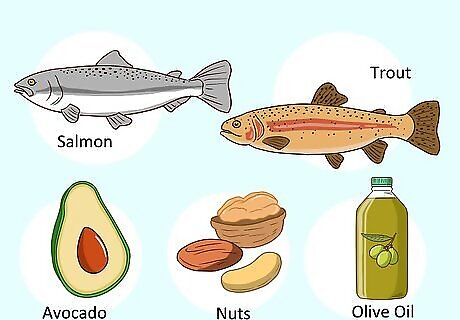
Eat more fish and healthy fats. Salmon, trout, and other fatty fish are great for joint health, so try to eat at least 2 to 3 servings per week. Avocados, nuts, olive oil, and other sources of healthy fats can help lubricate joints. While some fats are healthier than others, you should still moderate your fat and oil consumption. Recommended daily allowances range from 5 to 7 teaspoons and depend on your age, sex, and activity level. A medium avocado contains 6 teaspoons of oil, 2 tablespoons (29.6 ml) of peanut butter contains 4 teaspoons of oil, and a serving of raw or roasted nuts contains 3 to 4 teaspoons of oil. In moderation, unsaturated fats, such as those found in vegetable oils, are an important part of a healthy diet. Saturated and hydrogenated fats (also known as trans fats) aren't healthy choices and can increase LDL, or bad cholesterol levels. Sources of less healthy fats include butter, shortening, red meat, lard, and processed foods.

Eat plenty of fruits and veggies. Fruits and vegetables provide vitamins, minerals, and hydration, and many have anti-inflammatory properties. Leafy greens, broccoli, berries, and red grapes are packed with antioxidants. Sources of vitamin C, such as citrus fruits and peppers, can help prevent cartilage erosion. The amount you need depends on your age, sex, and other factors. For a general guideline, aim for 1 ⁄2 to 2 cups (350 to 470 mL) of fruit per day. A small apple, large orange, or large banana are each 1 cup (240 mL) servings. Try to eat 2 ⁄2 to 3 cups (590 to 710 mL) of vegetables per day. Go for a mix of leafy greens, red and orange veggies, and starchy veggies (like corn or potatoes). Serving examples include 1 cup (240 mL) of cooked spinach, 2 sliced medium carrots or 12 baby carrots, a large tomato, and a large ear of corn.

Avoid foods that contain lots of sugar or salt. Diets high in sugar and salt can aggravate joint pain. Your body needs salt in order to stay hydrated, but consuming too much is bad for your health. Moderating your salt and sugar intake can also help you lose excess weight, which is beneficial for your joints. Try to limit your daily salt consumption to between 1000 and 1500 mg. Don't add extra salt to your food and avoid salty snack foods, such as chips and pretzels. Try substituting salt with herbs, citrus juice, and other flavorings when you cook. Limit your sugar intake to natural sources, such as fresh fruit, and avoid sweets, canned products, and other sources of processed sugars.
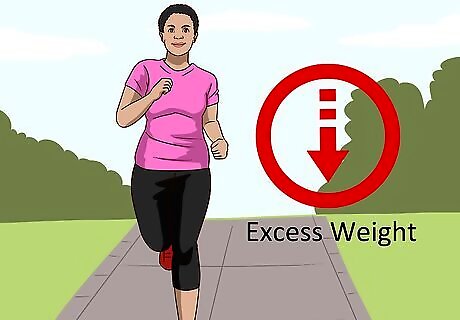
Work on losing excess weight. In addition to eating foods that specifically benefit your joints, try to maintain a healthy body weight. Carrying extra weight stresses your joints, especially if you have decreased synovial fluid. If you’re overweight, losing at least 5 percent of your body weight will reduce stress on your knees, hips, and other joints.
Trying Dietary Supplements

Talk to your doctor before taking a dietary supplement. While there’s debate over the effectiveness of dietary supplements, many people with joint issues claim that they relieve symptoms of joint pain. Consult your doctor first, ask them for a recommendation, and let them know about any medications you take to avoid potentially harmful drug interactions. If a supplement helps you, stick with it. If you take a supplement for 4 to 6 weeks and don’t notice any positive effects, it’s probably not worth the expense. You should also consult your doctor before taking a supplement if you're pregnant, plan on becoming pregnant, or are breastfeeding.
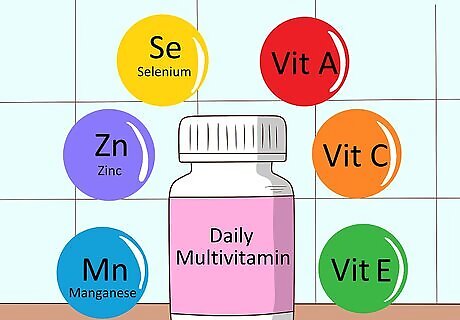
Consider taking a daily multivitamin. Taking a multivitamin can help you ensure you’re getting the nutrients your body needs to produce functional synovial fluid. Selenium, zinc, manganese, and vitamins A, C, and E are particularly beneficial for joint health. Ask your healthcare provider if you should take a multivitamin and to recommend a dosage. If they approve, look for a multivitamin labeled for joint health. Keep in mind that eating nutritious food is better than taking a nutritional supplement.
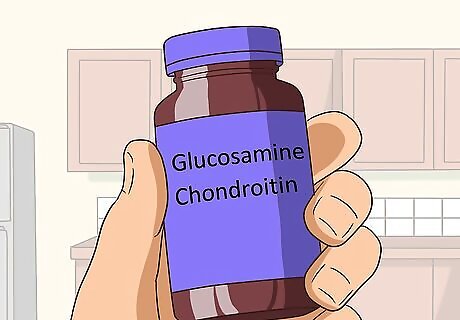
Try taking glucosamine and chondroitin supplements. There’s some evidence that glucosamine and chondroitin can relieve joint pain, prevent cartilage erosion, improve joint fluid, and regenerate joint structure. A typical regimen is 300 to 500 mg of each 3 times per day, but you should ask your doctor or pharmacist to recommend dosages. Don't take glucosamine or chondroitin if you're pregnant, plan on becoming pregnant, or are breastfeeding. If you're on blood thinners, ask your doctor about potential interactions between your medication and glucosamine.
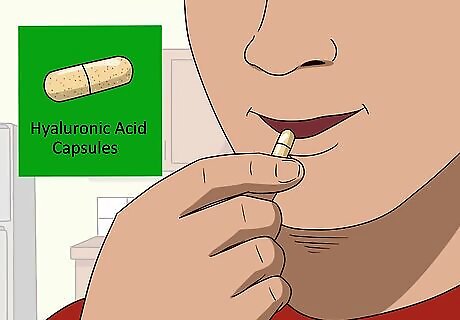
Try hyaluronic acid capsules. Hyaluronic acid gives joint fluid its lubricating and shock-absorbing properties. While injecting it directly into a joint is an established treatment for arthritis, taking an oral capsule is less invasive. When taken for a period of several months, a daily 200 mg dose might improve synovial fluid quality and improve joint health. While there are no known harmful drug interactions, you should still talk to your doctor before taking hyaluronic acid.

Take fish oil or omega-3 supplements. Omega-3 fatty acids might help your body produce the substances that make up healthy cartilage and joint fluid. You could take a daily supplement or get your omega-3s from eating more fatty fish, walnuts, and flaxseed products. A typical daily dose is 500 to 1000 mg. Don't consume more than 2000 mg per day. It's especially important to consult your doctor before taking an omega-3 supplement if you're pregnant, plan on becoming pregnant, breastfeeding, or take a blood thinner, such as warfarin. Don't take fish oil if you're allergic to seafood.
Exercising to Improve Joint Health
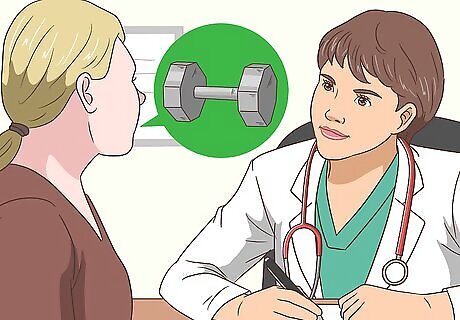
Consult your doctor before starting a new exercise routine. Regular exercise is important for overall joint health and can improve joint fluid’s lubricating and cushioning properties. If you have a history of medical issues or aren’t already active, ask your doctor for advice about safely starting a new exercise routine.

Start slow and modify activities if you experience pain. Start with small periods of activity, such as 5 minutes a few times per day. If you have joint issues, you’ll likely experience discomfort or stiffness for the first few weeks. Try to stay active on good days, or when you feel less pain, and take it easy on bad days. Stop exercising and talk to your doctor if you experience sharp, progressively worsening pain during or after exercise.
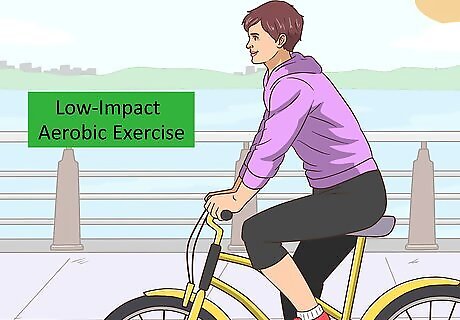
Go for low-impact aerobic exercises. Walking, low-speed cycling, dancing, and other forms of light aerobic exercise are your best options if you have joint issues. Increase your physical activity gradually, and try to work your way up to 2 hours and 30 minutes of light aerobic exercise per week. If you can do so without risking injury, you could also try jogging, running, and cycling at higher speeds.
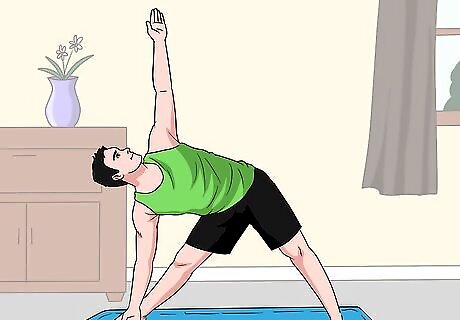
Try yoga and stretching routines. Regular flexibility exercises are especially important if you have arthritis or other joint issues. Look for a local yoga class for beginners or for your age group. Do light stretches every day to improve your joints’ overall health and ranges of motion. When you stretch, don’t force yourself to push past your natural range of motion. Try to hold a stretch for 10 to 30 seconds, but don’t overdo it. Stop stretching if you experience sharp pain or feel strained. If you have an injury, don’t stretch without consulting a physical therapist or another medical professional.
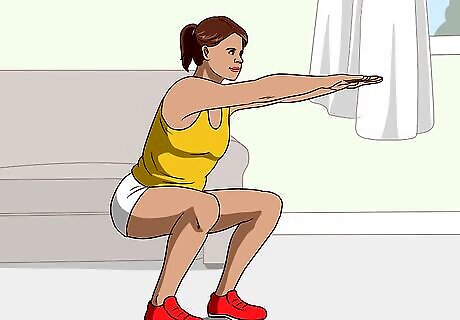
Do strengthening exercises if possible. Leg strengthening workouts, such as squats and lunges, are good for your knees, hips, and lower back. If you have elbow or shoulder joint issues, try weightlifting exercises, such as biceps curls and shoulder presses. Be sure to discuss strengthening exercises with your doctor first. If you’re just starting out, it’s best to take an exercise class or join a gym. Having an instructor or trainer present can help reduce the risk of injury.

Try swimming, especially if you feel pain during other activities. If you experience pain during weight-bearing exercises, such as walking or cycling, swimming could be a great solution. Swimming places less stress on your joints since they don’t carry your full weight when you’re in water. Try swimming laps, walking in a pool, or taking a water aerobics class.
Seeking Medical Treatment

Talk to your doctor or specialist about joint issues. Schedule an appointment if you have persistent joint pain or a history of joint issues. Your doctor can make an accurate diagnosis, help you come up with a treatment plan, or refer you to a joint specialist. Decreased joint fluid occurs naturally with age and is associated with some forms of arthritis. However, joint pain can be related to a variety of medical issues, so work with your doctor to determine the cause. While there's no medication that makes your body produce more joint fluid, your doctor might recommend medication to manage pain or an underlying condition.
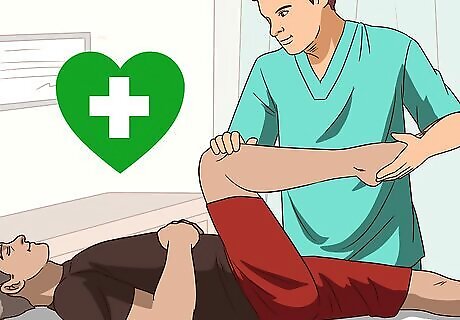
Look into physical therapy. Physical therapy could be beneficial if you’re injured or if your joint issues prevent you from exercising on your own. If you have an injury, physical therapy can help prevent future joint issues, including changes in synovial fluid. Ask your doctor to recommend a physical therapist or use the American Physical Therapy Association’s search tool: http://aptaapps.apta.org/findapt/default.aspx?navID=10737422525&UniqueKey=.
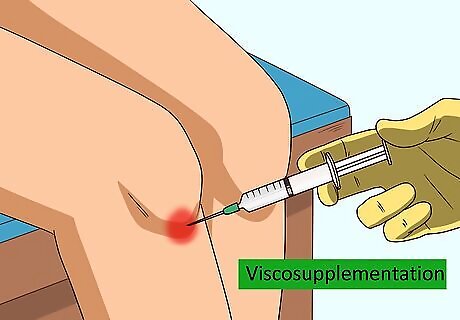
Ask your doctor about viscosupplementation. If you have decreased or poor quality synovial fluid, your doctor could inject hyaluronic acid into the affected joint. Depending on the severity of your joint pain, they’ll administer 1 to 5 injections over the course of several weeks. It's a quick procedure, but you’ll need to avoid excessive activity for 48 hours after an injection. You might feel pain, warmth, or minor swelling after an injection. An ice pack can help ease these symptoms, and they usually don't last long. Contact your doctor if these symptoms worsen or if you experience bleeding. Injections are usually recommended only after trying all other nonsurgical treatment methods. While many people report reduced pain and improved function, viscosupplementation doesn't work for everyone.


















Comments
0 comment